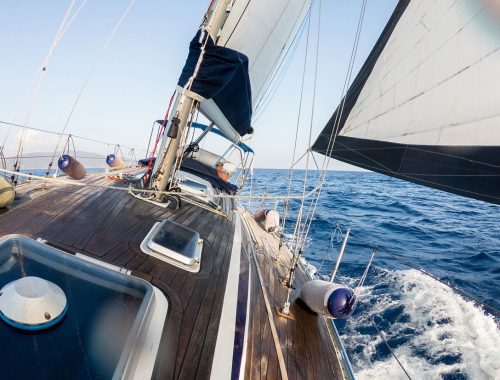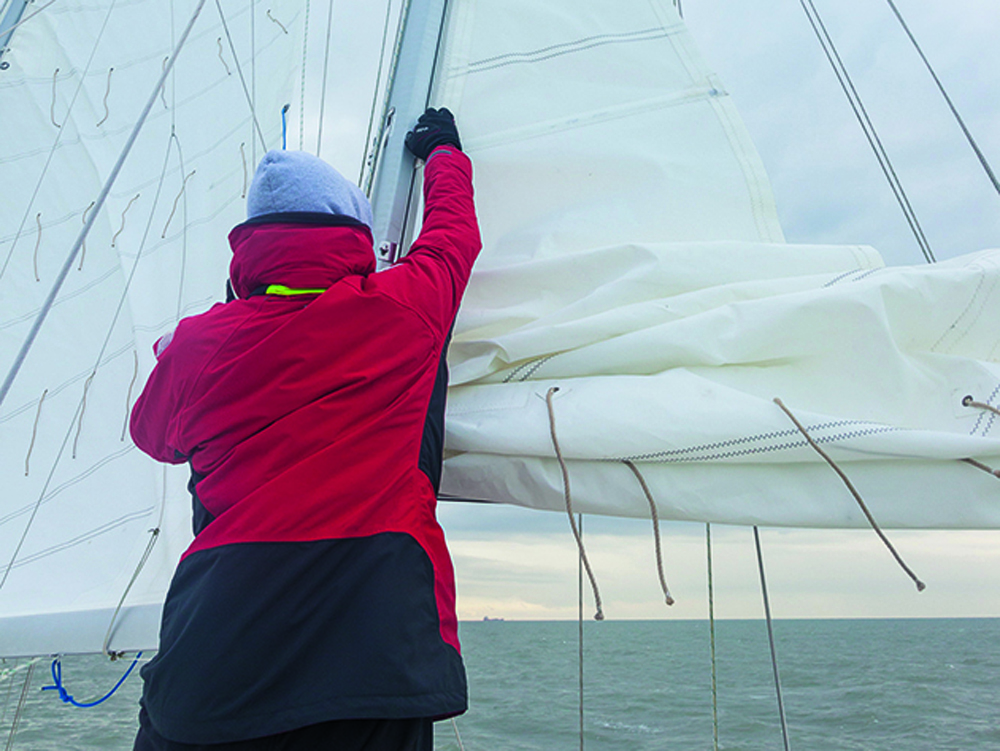
Raising and lowering the mainsail: Troubleshooting
What can you do if your mainsail is difficult to raise or reluctant to lower during a cruise? The possibility that the mainsail on some boats does not go up or down easily and quickly is a problem often underestimated by skippers and owners. Many simply end up living with it. When it happens, they just pull the halyard a little harder, maybe using a winch, and try to manage as best they can, hoping and praying that it does not lead to a complete jam. Most of the time it works out, but these makeshift solutions are certainly not the right answer.
Being stuck with a sail that won’t go up, or worse, won’t go down, is a potentially dangerous situation. It can happen in bad weather, near a harbor entrance, or when navigating narrow waters with limited room to maneuver.
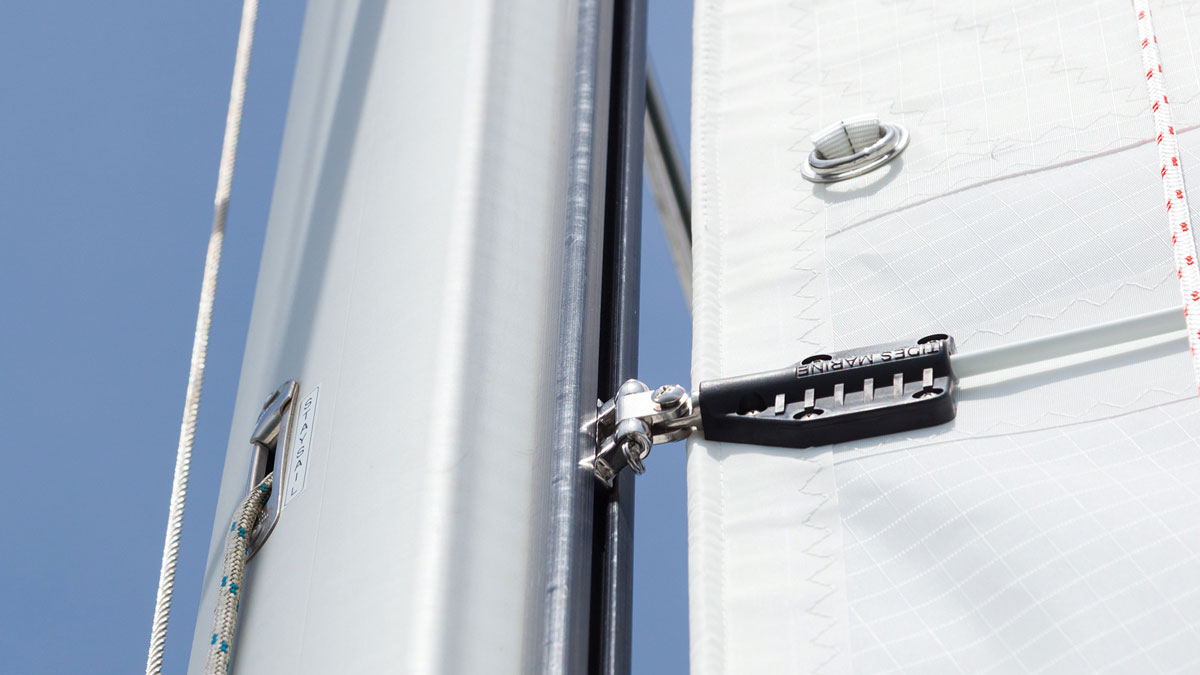
The mainsail: Sliding cars
In principle, raising and lowering the mainsail are fairly simple and straightforward operations. The problem is that you are working against gravity on one hand, when the mainsail has to go all the way up the mast, and against friction on the other, when the sail has to come down. What goes up does not always come down with the same ease. What is often the cause of mainsail jamming problems are the slides on which the sail moves along the mast.
Generally, production boat yards rely on masts made by well-known companies, such as Seldén, Z Spars, or Sparcraft. These masts feature a series of grooves at the back where the sail is inserted. The sail’s movement along the mast is facilitated by a series of guides. These can be simple plastic slides without moving parts for lighter, simpler sails, or roller devices, or even ball bearing systems that perform much better for larger, heavier mainsails. Unfortunately, every mast has different grooves, so if you are buying a new sail for a second-hand boat, you need to make sure the sailmaker installs the correct guides. The type of slides to fit on your sail will depend on its size, the mainsheet, and the number of battens. All elements to discuss carefully with your sailmaker. If the slides are wrong or simply not to specification, a mainsail jam is guaranteed.
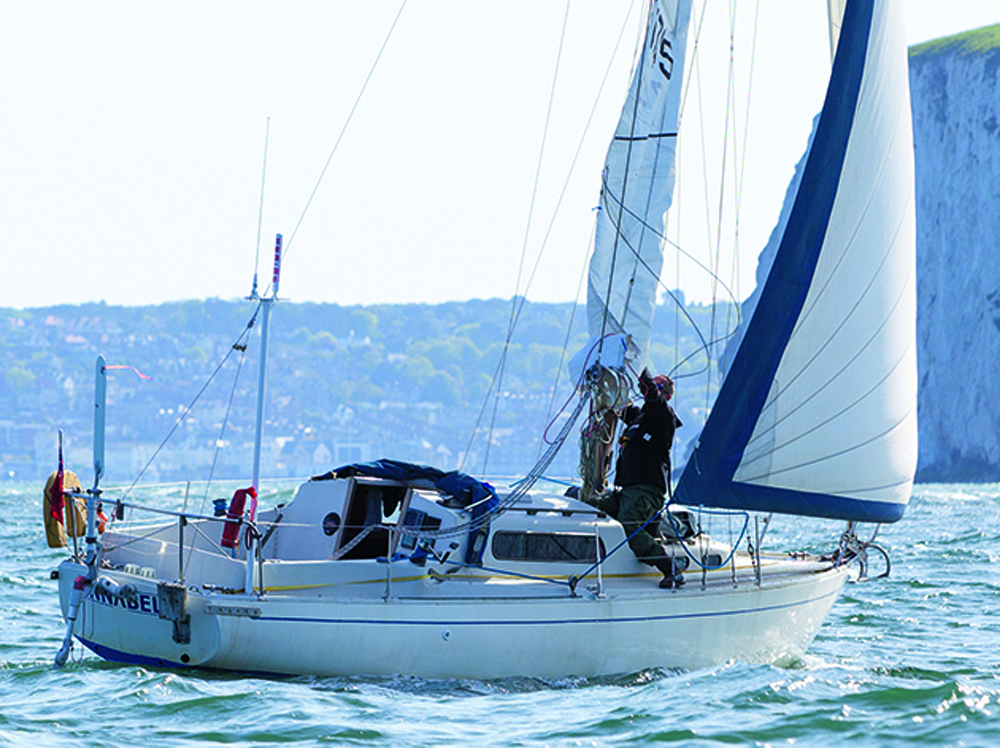
Other causes of mainsail jamming
Another issue that can prevent the mainsail from sliding smoothly during raising and lowering is a dirty or blocked track. A clear sign of this is the presence of horizontal creases near the sail luff that appear from mid-mast down. These creases can be caused by excessive friction of the slides in the mast groove. As the mainsail is hoisted, the slides are increasingly stressed, causing tension to rise at the top of the sail while gradually decreasing lower down.
The friction and jamming problem can be resolved by thoroughly cleaning the track with a cloth and soapy water and applying a dry Teflon-based lubricant along the entire rail. Cleaning and lubricating the mast track is often overlooked, which is why mainsails sometimes refuse to be raised or lowered.
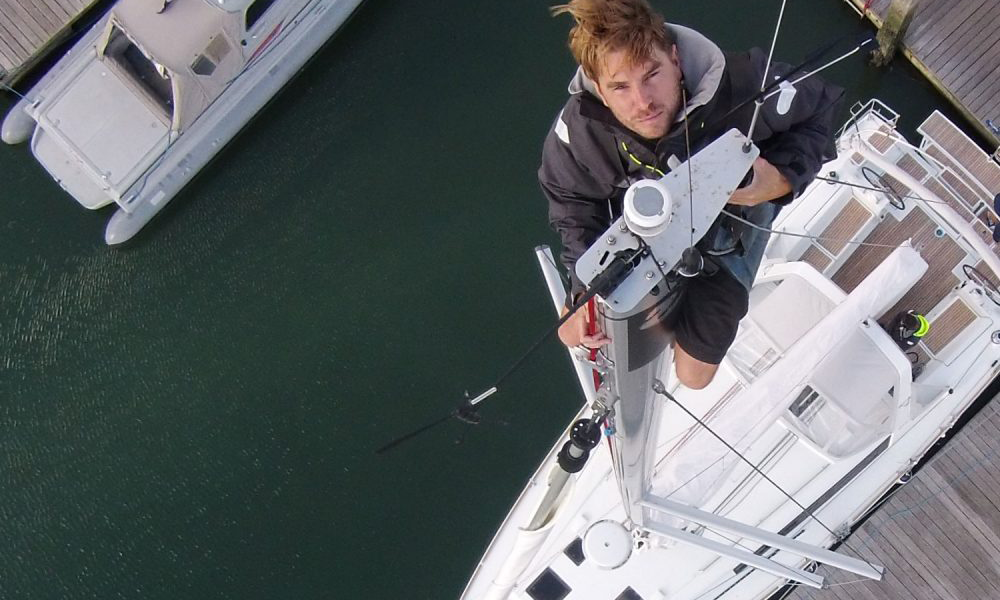
Check halyards and masthead pulley
Typically, the mainsail halyard runs through a pulley at the top of the mast. This pulley is usually made of aluminum and rotates on a stainless steel pin. Over the years, the interaction between the two metals can cause oxidation or corrosion, which may lead to pulley jams. Regular cleaning and maintenance usually solves the issue, but if periodic inspection shows signs of malfunction, it is essential to replace old pulleys immediately.
Frequent mainsail jams also require checking the halyards. Over time, ropes become stiff and rigid due to dirt, salt, UV exposure, and tension. Stiff halyards do not run freely and are harder to handle. Replacing them can solve mainsail jamming and operational issues.
Discover the best boat rental deals
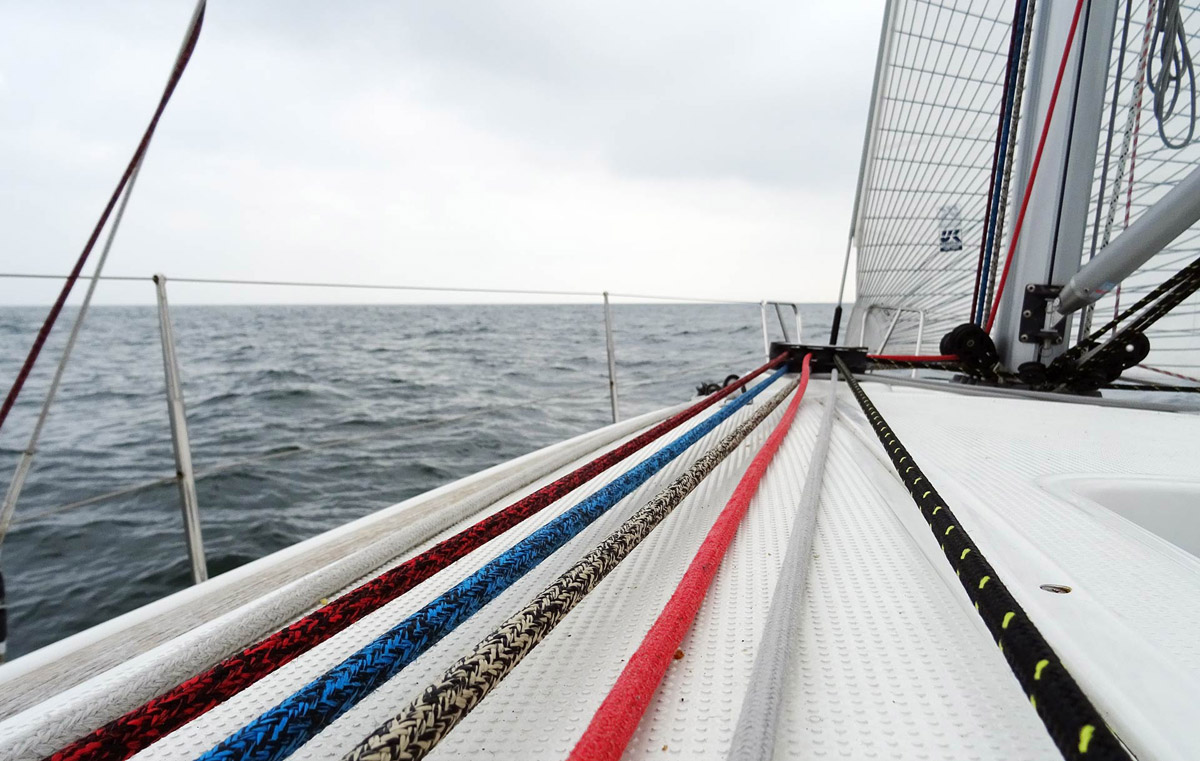
Mainsail halyard led to the cockpit
In recent decades, it has become common to lead halyards to the cockpit for easier handling. This means the halyard runs from the top of the sail, around the masthead pulley, down and out of the mast, then through a deck block, possibly through a rope organizer, and finally around a winch. The 180-degree turn around the masthead pulley is inevitable. Additional turns required to lead the halyard to the cockpit inevitably add friction.
It is important to know that friction along the halyard’s entire path is not just cumulative, it multiplies. For example, three points of friction plus another three points mean you are working against a friction factor of nine, not six.

Assistance from winches
If the mainsail never fully jams but friction during raising and lowering is significant, a larger, more powerful winch can help, perhaps with a longer handle for greater leverage or, even better, an electric winch. In this case, however, caution is needed during actual jams to avoid causing serious damage to the system.
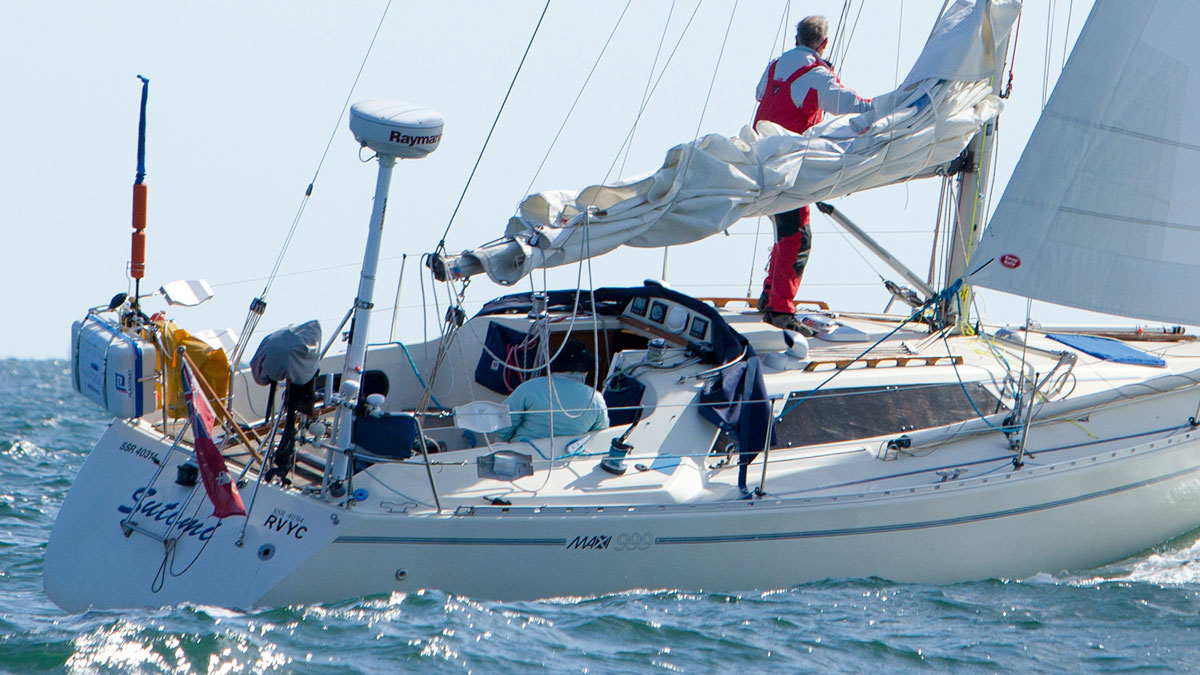
What to do if the mainsail won’t come down
First, move away from potential hazards, other boats, and obstacles. Then, sailing across the wind, calmly try to identify the issue. Check the stoppers, mast base pulleys, and the entire halyard path to where it enters the mast. If these checks show nothing, use binoculars to inspect the masthead for problems. If the issue still cannot be identified, there are three options.
The first is to climb the mast equipped with pliers, a knife, a screwdriver, CRC spray, and a small hammer. If you can free the halyard, great; if not, it must be cut. The second option is to return to port, requesting permission via VHF to maneuver under sail. Finally, as a last resort, in case of bad weather, limited crew, or other emergencies, assistance can be requested.
You May Also Like

Managing wind gusts: Tips for safe sailing
28/11/2025
Sailing among the Aegadian Islands, San Vito and the Zingaro Reserve
15/04/2024